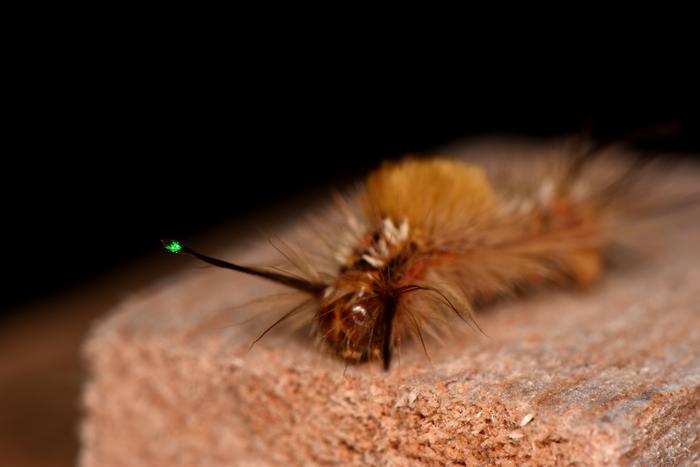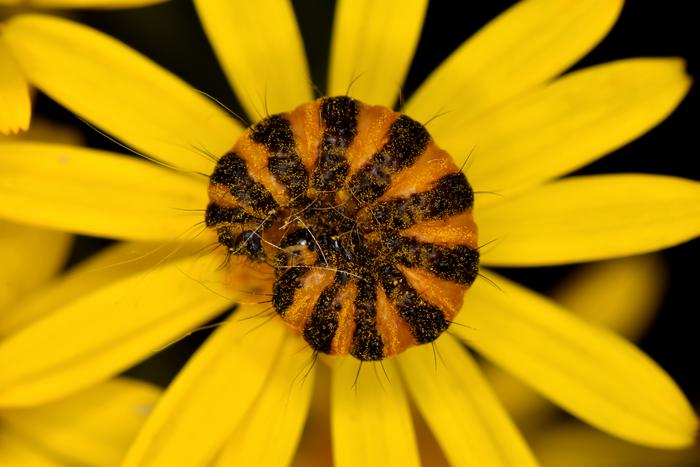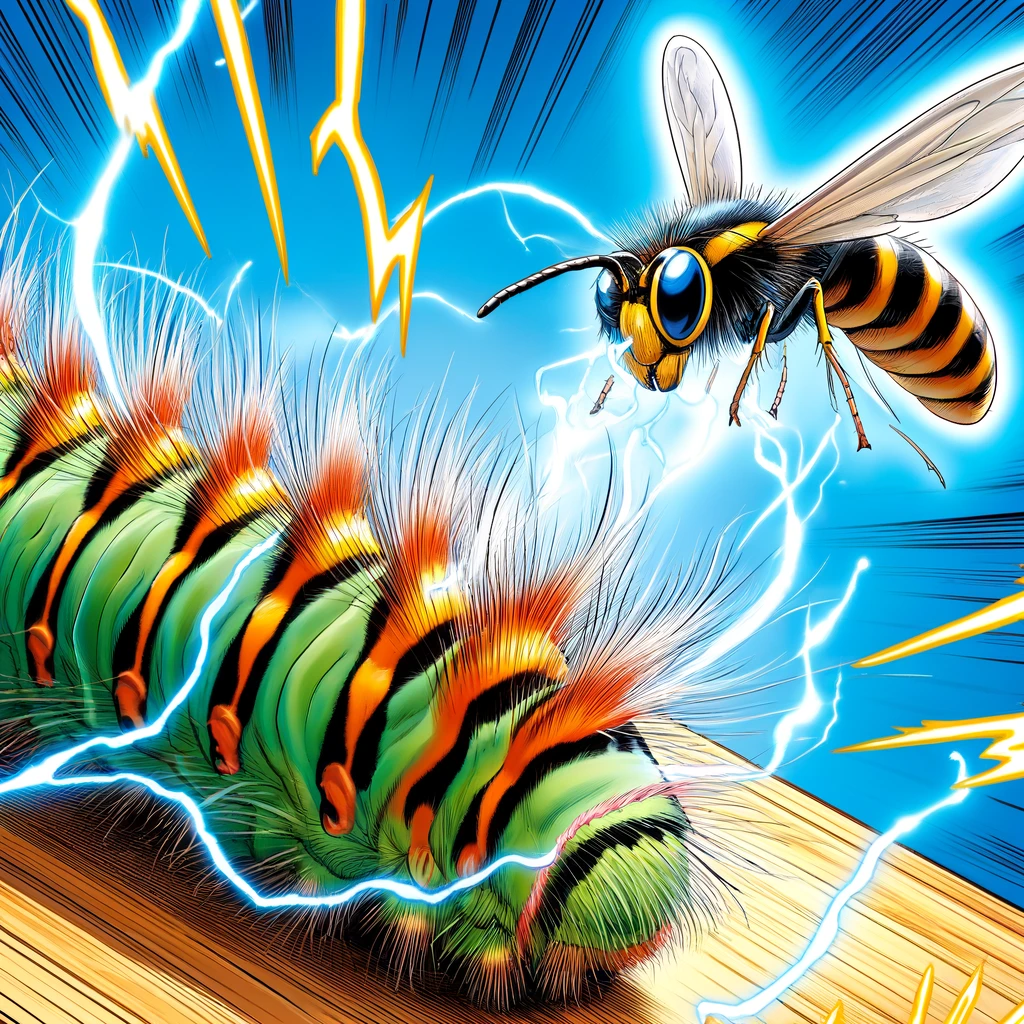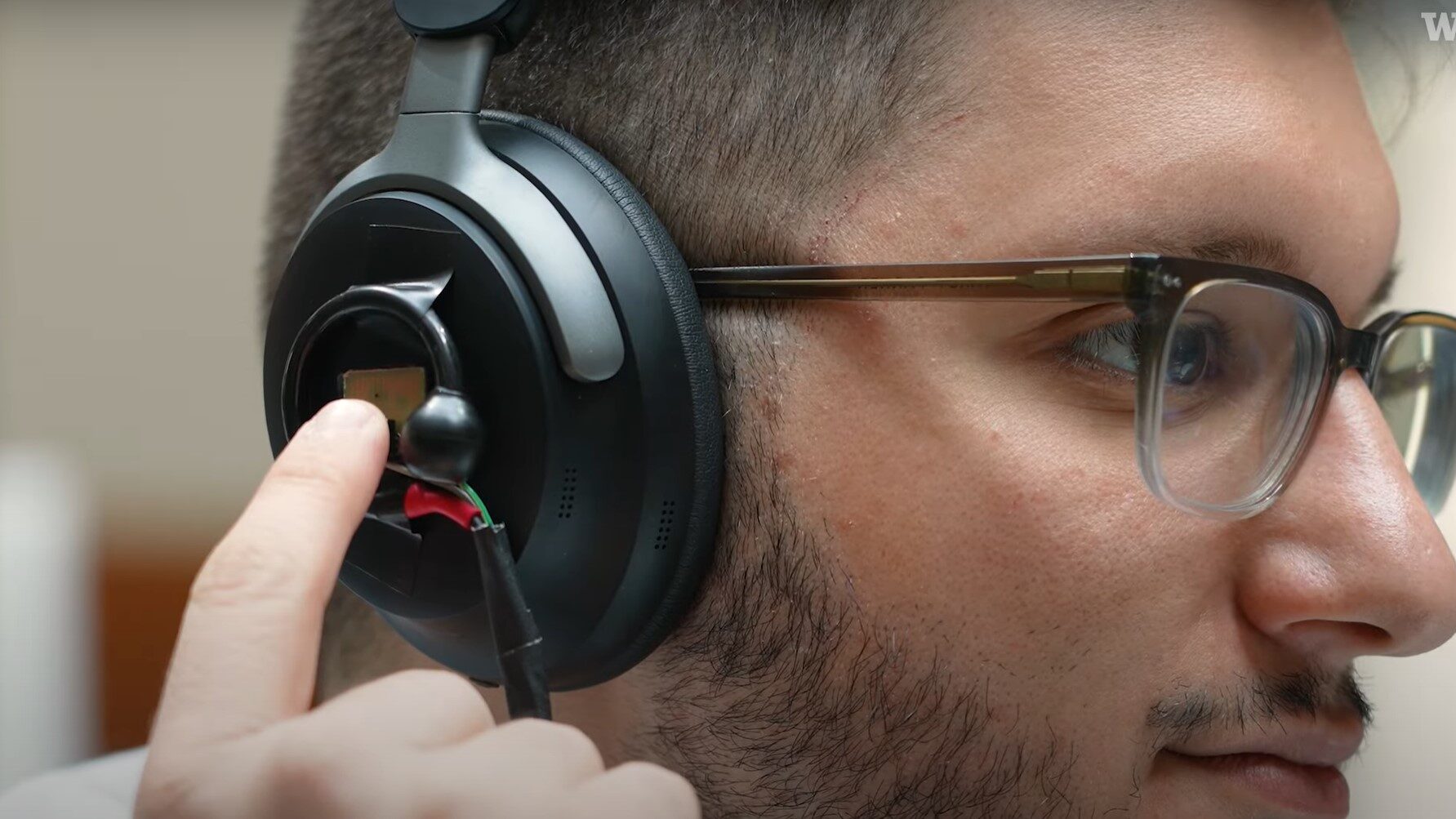From University of Bristol 31/05/24. Title by Superinnovators.

Caterpillars respond defensively to electric fields similar to those emitted by their natural predators, scientists at the University of Bristol have found.
In the study, published today in the journal PNAS, experts showed that caterpillar hairs move in response to electric fields and are most sensitive to the frequencies that correspond to the wingbeats frequencies of other insects, indicating that their hairs could be tuned to pick up the electrical cues of their predators.
These findings are the first example of static electricity being used as a sensory cue in a predator-prey interaction.
Lead author Dr. Sam England explained: “We knew that many animals naturally accumulate static electricity on their bodies as they move around their environment, and that static electricity can push and pull on other charged objects.”
“In particular, we knew that the hairs of insects can be moved around by the electric field emitted from statically charged objects, in the same way that a charged-up balloon can move the hair around on your head.”
“This made us wonder, what if a prey animal, like a caterpillar, could detect its predators by feeling the electric field coming off of them?”
“Would the static charge of a predator, like a wasp, push and pull on the sensory hairs of a caterpillar enough to inform the caterpillar of the wasp’s approach?”
The team measured how much static charge wasps and caterpillars carry by having them pass through a static charge sensor.

They then inputted these charge values into computational models to mathematically predict how strong the electric field would be when a wasp approaches a caterpillar on a plant.
When the caterpillars responded defensively to these conditions, they were able to use a laser to detect tiny vibrations to investigate whether it was the sensory hairs that were detecting the electricity, by measuring how much they move in response to different frequencies of electric field.
The results of the study are concerning because they show that caterpillars are also sensitive to the frequencies of electric field emitted by powerlines and other electronic equipment.
This means that humans may be hindering the ability of animals to detect their predators by filling the environment with electrical ‘noise’.
Dr. England continued: “I would say it feels quite urgent now to assess whether we are hampering the ability of caterpillars and other animals to detect their predators by introducing a new type of sensory pollution – electrical noise.”
“Predator-prey interactions are a matter of life and death and as such they are one of the main drivers of evolution in animals.”

Almost all animals on land appear to accumulate static charge meaning this static electric sense may be widespread, and the discovery that static electricity plays a role in these ecological interactions stands to open up entirely new dimensions to our understanding of how animals sense each other, and more generally how and why they evolve in certain ways.
Dr. England added: “Our study shows that it is possible for terrestrial animals to use static electricity as a predator detection cue.
“This is very likely a widespread ability, especially amongst insects and other small animals like spiders and scorpions.”
“This study presents the first example of an animal detecting its predators by sensing the static electricity being emitted by the predator.”
“This unveils a new dimension to predator-prey interactions on land, but also hints at a previously unnoticed way in which we might be negatively impacting wildlife – by introducing sources of electrical sensory pollution.”












